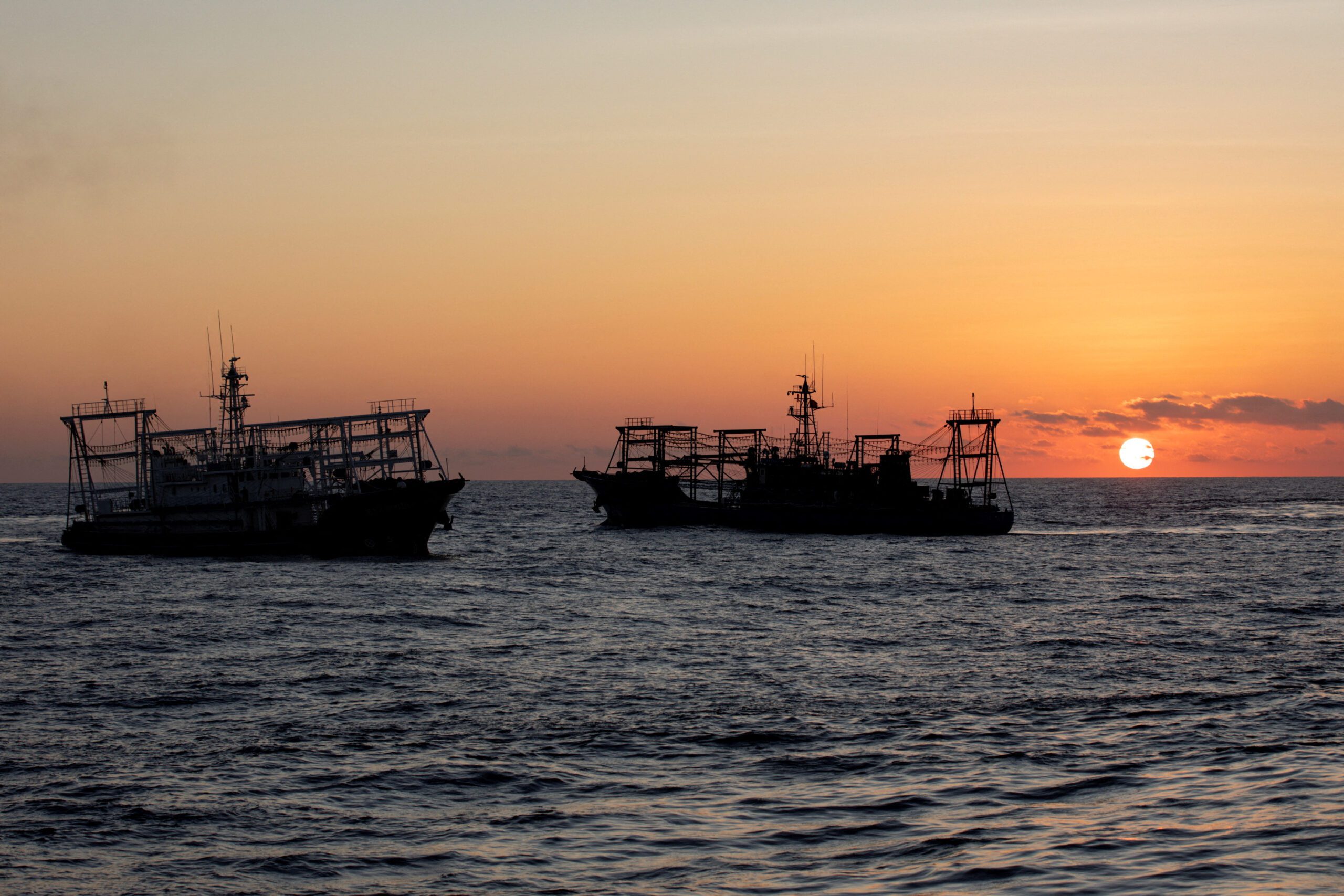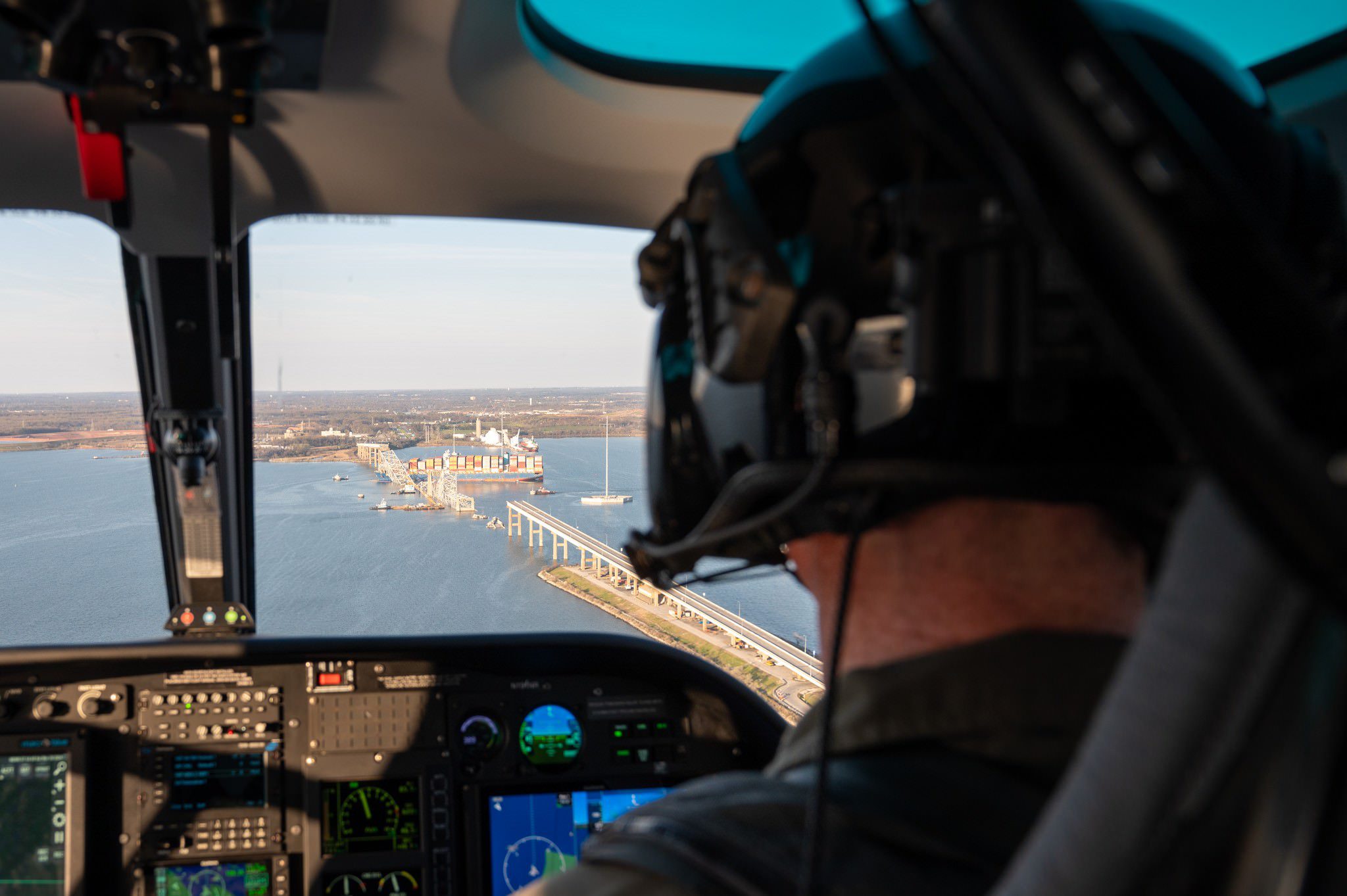The first pilot ladder that was replaced by the USS Howard’s crew
Ship pilots, in case you’re not familiar, are required on board commercial ships as they enter port. These individuals are generally master mariners with a detailed understanding of the currents and navigational hazards within their particular domain, and they are widely regarded as having the most keen shiphandling skills of any mariner.
Being a harbor pilot is one of the most highly sought after careers for a mariner, and thus, very competitive. It does however, involve personal risk to life and limb due to the fact in most cases, going to work involves scaling the side of a ship via a rope and plastic ladder that is hung over the side.
This maneuver is a daily occurrence just outside of harbors and inlets around the world, in sometimes truly challenging weather and sea state conditions.
The US Navy is no exception, and you’ll find a pilot on board their warships on every trip in and out of the harbor. On Monday however, the pilot assigned to the USS Howard, a guided missile destroyer stationed in San Diego, experienced the surprise of his life.
A few miles out to sea, the pilot boat operator approached the warship, but immediately noticed blatant safety issues needed to be corrected. Noting the poor state of repair of the ladder hanging over the side, the pilot boat requested its replacement.
After the swapping out the bad ladder, the pilot began his climb up the vertical grey-painted steel. Upon reaching the very top rung, disaster struck and the ladder slipped over the edge about 2 feet.
The knots tying it to the ship had failed.
Losing his footing, the Pilot held on to the ladder with one hand until finally his grip let go. He fell approximately 18 feet to the wavetops.
In an email, Jacobsen Pilot Service’s President, Tom Jacobsen comments:
The pilot boat was in the right position so that it wasn’t in the way of the Pilot’s fall, and could quickly turn around and rescue the Pilot. Our procedures worked absolutely perfectly; Mayday calls on VHF radio, Lifeguard boats launched immediately to the rescue, VTS plotting pilot boat & ships position, and even the Fire Boat was headed to the scene.
All of our man overboard drills and boat upgrades paid off. The Pilot was in the water for only two minutes! Once back onboard the pilot boat Polaris, we got him back to the Pilot station, warmed him up in a hot shower, and then sent him to the medical clinic to be checked out.
As of today I think he is OK.
We’ll discuss this at our next Pilot Advisory council. Also we will discuss our ongoing problem with the US Navy on rigging pilot ladders and will update everyone on what steps we have taken.
A US Navy spokesperson commented on this incident for us stating:
The US Navy recognizes that there is inherent risk associated with operations at sea, and in particular, at-sea personnel transfers. We take all due precautions in preparation for arriving in port, including formal briefs to mitigate risk to the lowest level possible. An investigation into this incident is in progress.
We asked one of our subject matter experts to give us an analysis of the pilot ladder in the above image. The following deficiencies were noted:
- The steps are misaligned and possibly damaged due to wear and tear
- The ladder is too long, should not be dragging in the water
- The lines are not taught
- The sling that is tied off at the step that is used by the crew to pull the ladder up, is not tied off low enough. Those things are difficult to pull in and if there is so much ladder below it, it is not only hard to pull up, but likely pretty dangerous.
- There is no hand rail at the top on the vessel for someone to grab onto as they are climbing up.
- There is no one at the top to assist or watch the person climbing up.
- The two rails that it is tied off from are both bent slightly the other way, never a good sign.
Unlock Exclusive Insights Today!
Join the gCaptain Club for curated content, insider opinions, and vibrant community discussions.

 Join The Club
Join The Club













